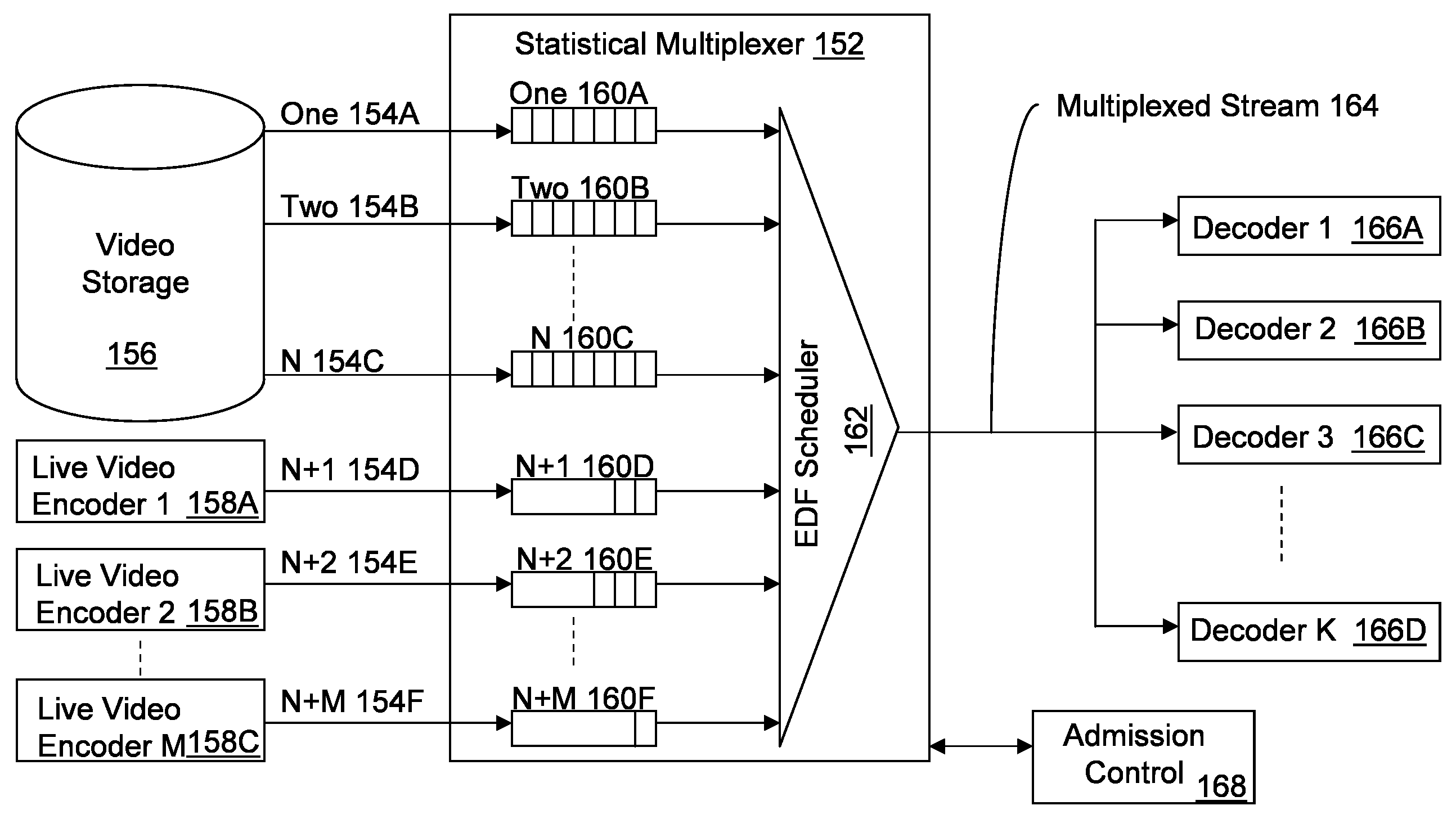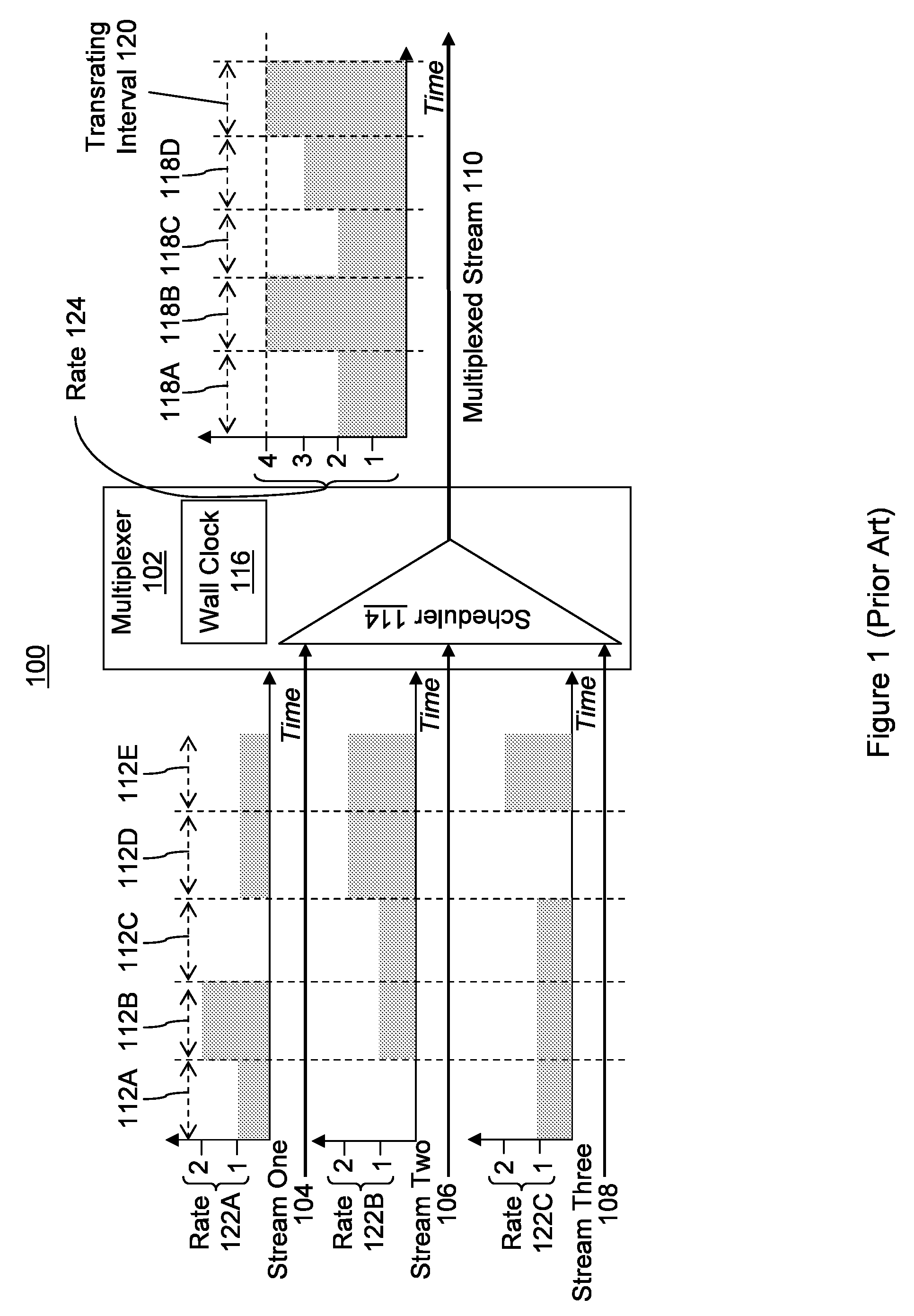Statistical multiplexing of compressed video streams
a technology of statistics and video streams, applied in the field of statistics multiplexing of compressed video streams, can solve the problems of additional “pcr jitter” caused by such packetization, and high transmission cost by under-utilizing the available bandwidth, so as to reduce the transmission cost per stream, high scale, and high scalable
- Summary
- Abstract
- Description
- Claims
- Application Information
AI Technical Summary
Benefits of technology
Problems solved by technology
Method used
Image
Examples
Embodiment Construction
[0052]In general overview, a corresponding deadline of each packet in a plurality of packets of a compressed video stream is computed based on a program clock reference value of the packet. The plurality of packets are sorted based on the deadlines corresponding to the packets. A packet is selected from the sorted plurality of packets, where the next packet has a corresponding deadline nearest to a system clock time. The selected packet is transmitted.
[0053]In some embodiments, a first priority group and a second priority group are determined for compressed video streams. A first packet of a first compressed video stream is selected from the first priority group, where the first packet has a first deadline. The first deadline is an earliest deadline of the first priority group. It is determined whether to transmit the first packet based on the first deadline and a system clock time. If the first packet is to be transmitted, the first packet is transmitted. If the first packet is not...
PUM
 Login to View More
Login to View More Abstract
Description
Claims
Application Information
 Login to View More
Login to View More - R&D
- Intellectual Property
- Life Sciences
- Materials
- Tech Scout
- Unparalleled Data Quality
- Higher Quality Content
- 60% Fewer Hallucinations
Browse by: Latest US Patents, China's latest patents, Technical Efficacy Thesaurus, Application Domain, Technology Topic, Popular Technical Reports.
© 2025 PatSnap. All rights reserved.Legal|Privacy policy|Modern Slavery Act Transparency Statement|Sitemap|About US| Contact US: help@patsnap.com



